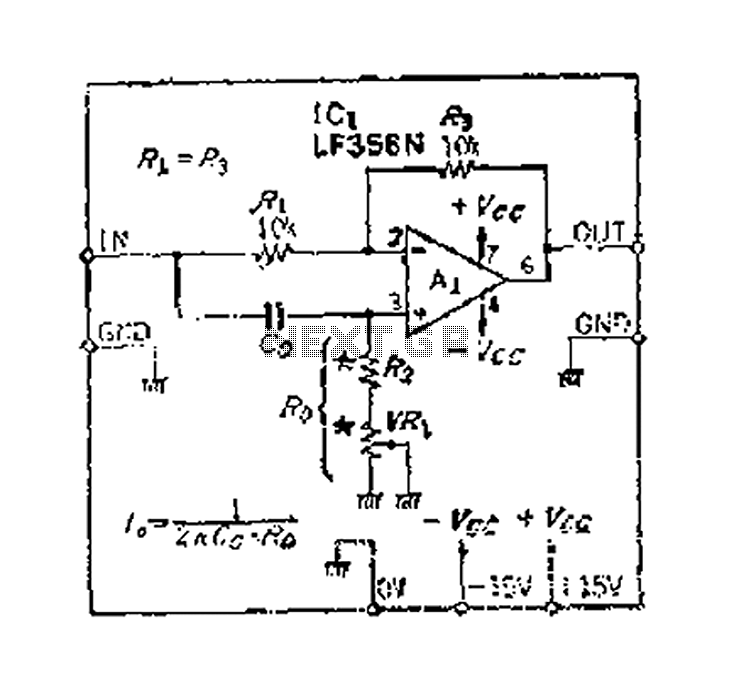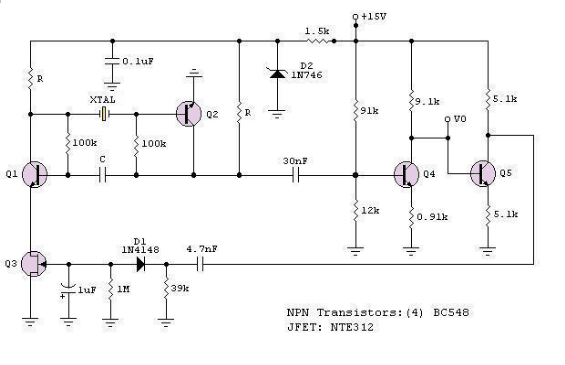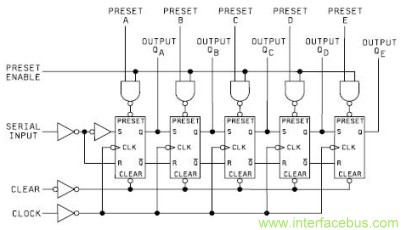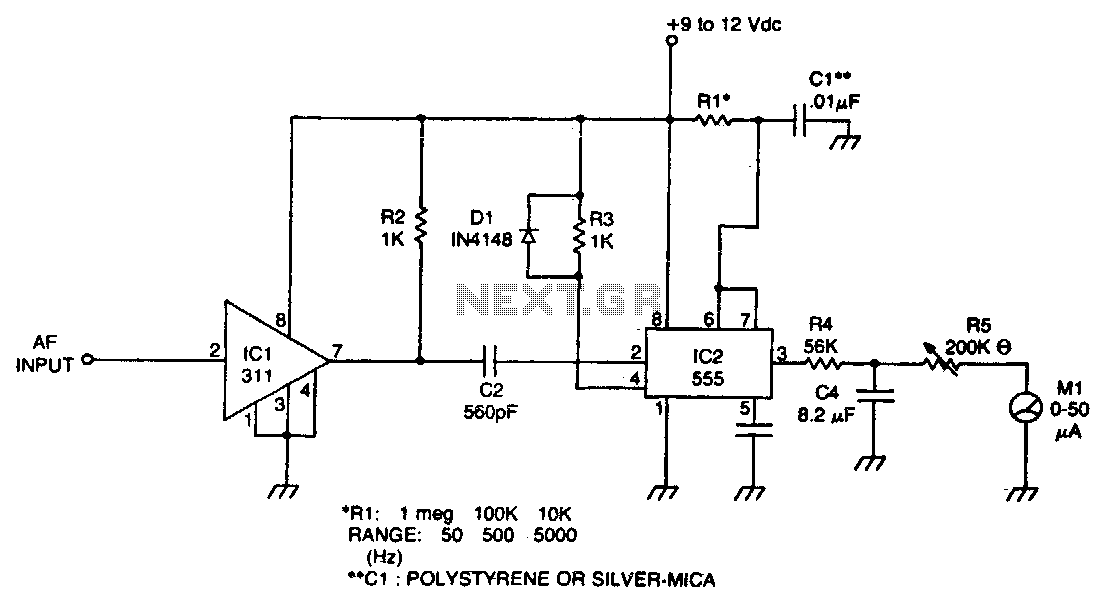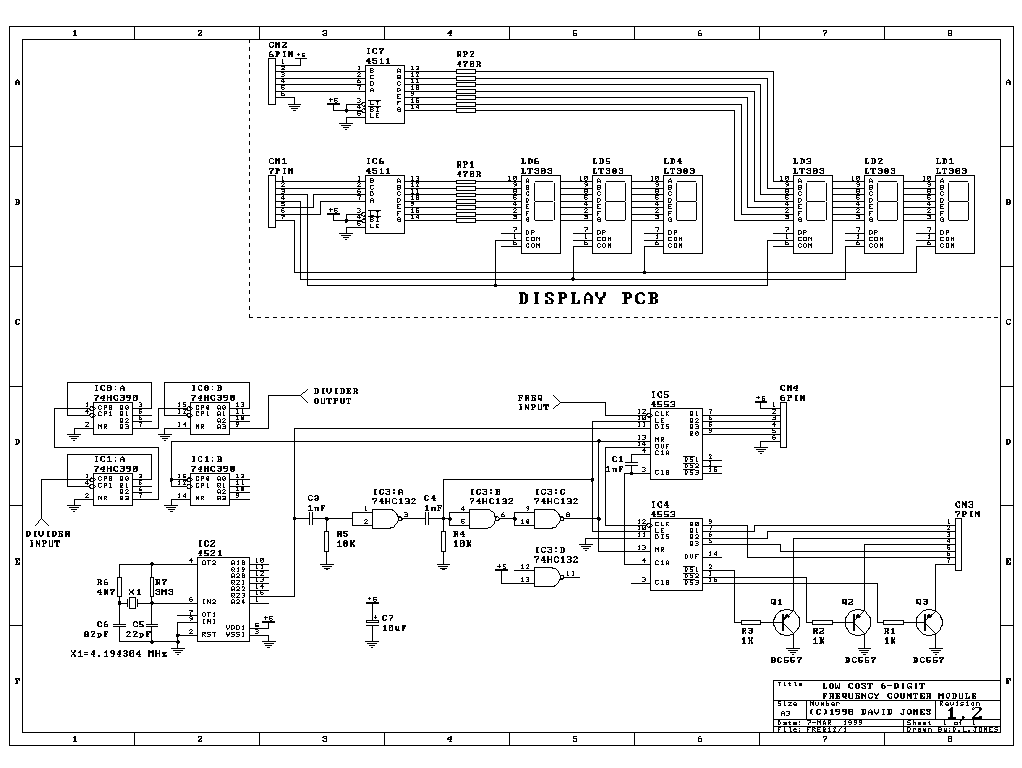
Frequency Shift Keying (FSK) Demodulator
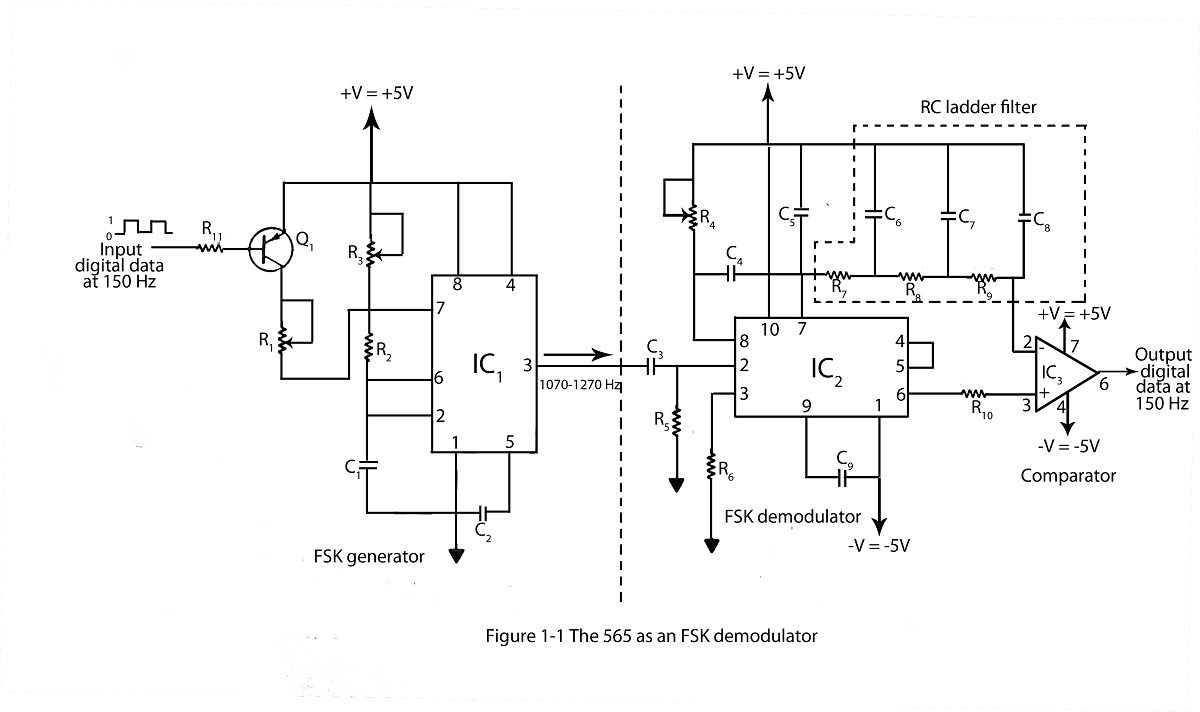
The frequency shifting keying technique is utilized to transmit binary data. The circuit diagram includes a description of an FSK demodulator that employs the 565 integrated circuit for frequency shift keying.
The frequency shift keying (FSK) technique is a form of digital modulation where the frequency of a carrier signal is varied in accordance with the binary data being transmitted. This method is particularly effective in environments with noise, as it allows for robust signal detection. The FSK demodulator circuit typically consists of a frequency discriminator, which translates the frequency variations back into the original binary data.
In this specific implementation, the 565 integrated circuit (IC) is employed as the core component of the FSK demodulator. The 565 IC is a phase-locked loop (PLL) that can be configured to detect frequency shifts effectively. It operates by locking onto the frequency of the incoming signal and producing an output that corresponds to the frequency changes, which represent the binary data.
The circuit diagram of the FSK demodulator includes the following key components:
1. **Input Signal**: The modulated FSK signal is fed into the circuit, typically through a capacitor for AC coupling.
2. **565 IC Configuration**: The 565 IC is configured in a manner that allows it to detect the two distinct frequencies used in the FSK modulation. External resistors and capacitors are connected to the IC to set the appropriate bandwidth and response time.
3. **Output Stage**: The output from the 565 is a square wave signal that corresponds to the original binary data. This output can be further processed or fed into a microcontroller for digital processing.
4. **Power Supply**: The circuit requires a stable power supply, typically in the range of 5V to 15V, depending on the specifications of the 565 IC.
5. **Filtering and Smoothing**: Additional filtering components may be included to smooth out any noise or fluctuations in the output signal, ensuring a clean representation of the binary data.
Overall, the circuit diagram and configuration of the FSK demodulator using the 565 IC provide a reliable and efficient method for demodulating frequency-shifted signals, making it suitable for various communication applications. Proper layout and component selection are crucial for achieving optimal performance and signal integrity in the final design.Frequency shifting keying technique is used to transmit binary data. The circuit diagram with description fsk demodulator used 565 IC for frequency shift keying. 🔗 External reference
The frequency shift keying (FSK) technique is a form of digital modulation where the frequency of a carrier signal is varied in accordance with the binary data being transmitted. This method is particularly effective in environments with noise, as it allows for robust signal detection. The FSK demodulator circuit typically consists of a frequency discriminator, which translates the frequency variations back into the original binary data.
In this specific implementation, the 565 integrated circuit (IC) is employed as the core component of the FSK demodulator. The 565 IC is a phase-locked loop (PLL) that can be configured to detect frequency shifts effectively. It operates by locking onto the frequency of the incoming signal and producing an output that corresponds to the frequency changes, which represent the binary data.
The circuit diagram of the FSK demodulator includes the following key components:
1. **Input Signal**: The modulated FSK signal is fed into the circuit, typically through a capacitor for AC coupling.
2. **565 IC Configuration**: The 565 IC is configured in a manner that allows it to detect the two distinct frequencies used in the FSK modulation. External resistors and capacitors are connected to the IC to set the appropriate bandwidth and response time.
3. **Output Stage**: The output from the 565 is a square wave signal that corresponds to the original binary data. This output can be further processed or fed into a microcontroller for digital processing.
4. **Power Supply**: The circuit requires a stable power supply, typically in the range of 5V to 15V, depending on the specifications of the 565 IC.
5. **Filtering and Smoothing**: Additional filtering components may be included to smooth out any noise or fluctuations in the output signal, ensuring a clean representation of the binary data.
Overall, the circuit diagram and configuration of the FSK demodulator using the 565 IC provide a reliable and efficient method for demodulating frequency-shifted signals, making it suitable for various communication applications. Proper layout and component selection are crucial for achieving optimal performance and signal integrity in the final design.Frequency shifting keying technique is used to transmit binary data. The circuit diagram with description fsk demodulator used 565 IC for frequency shift keying. 🔗 External reference
